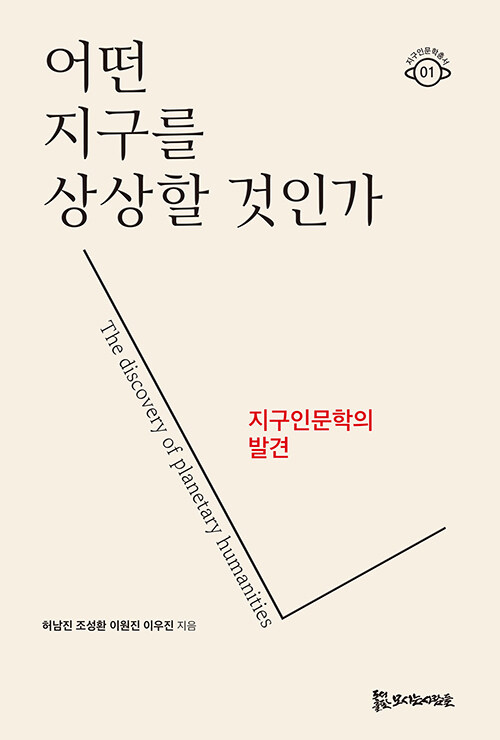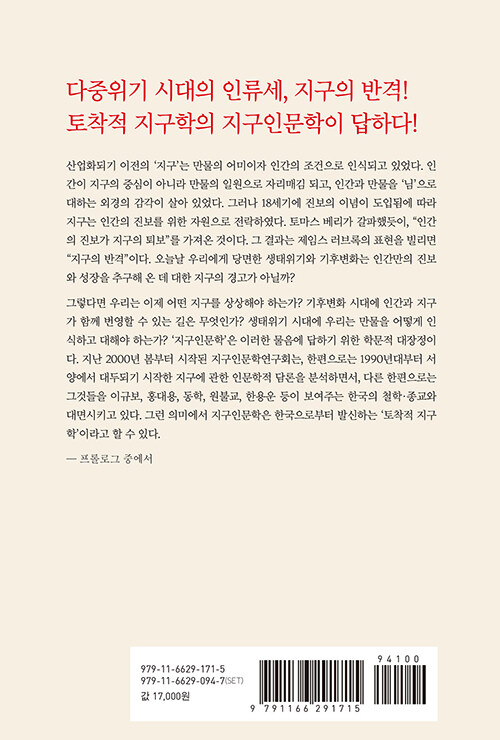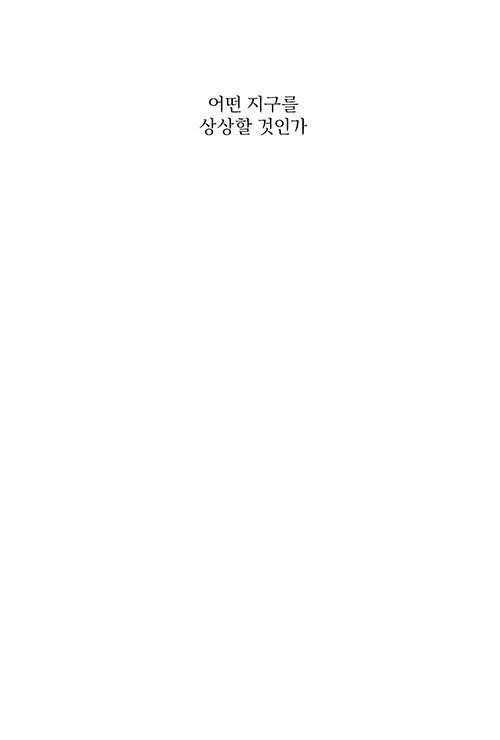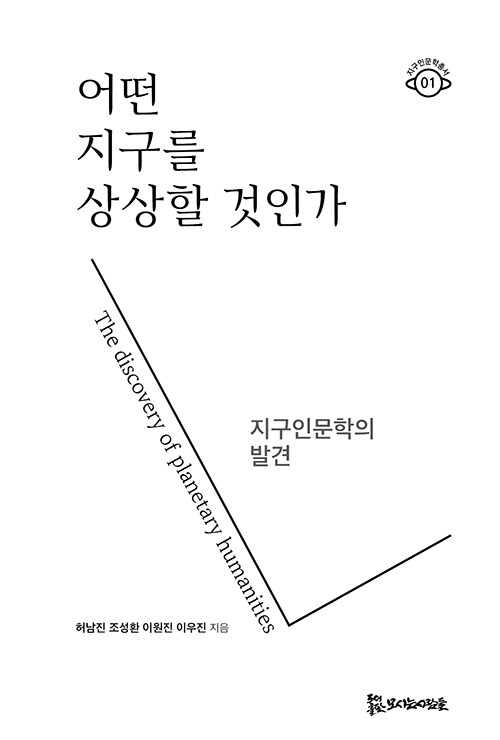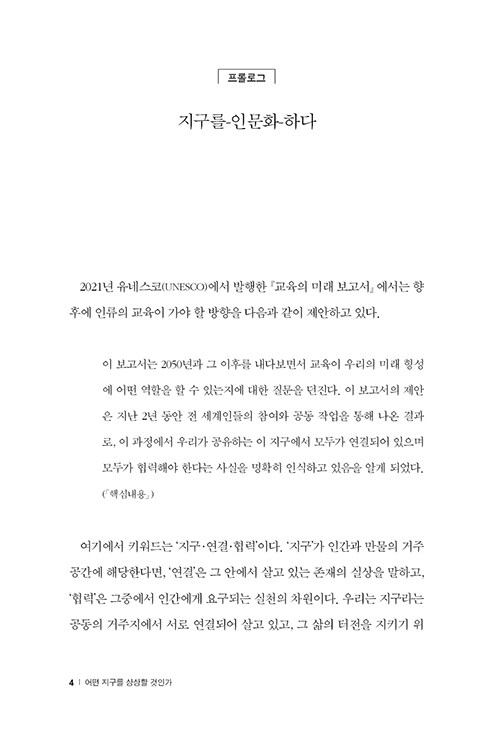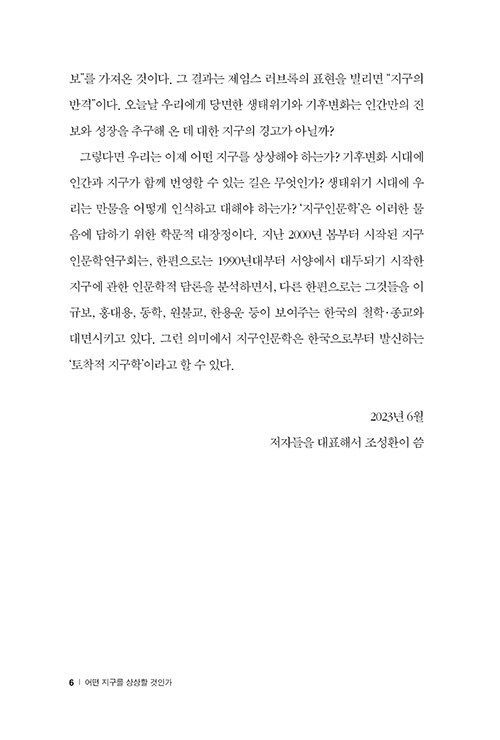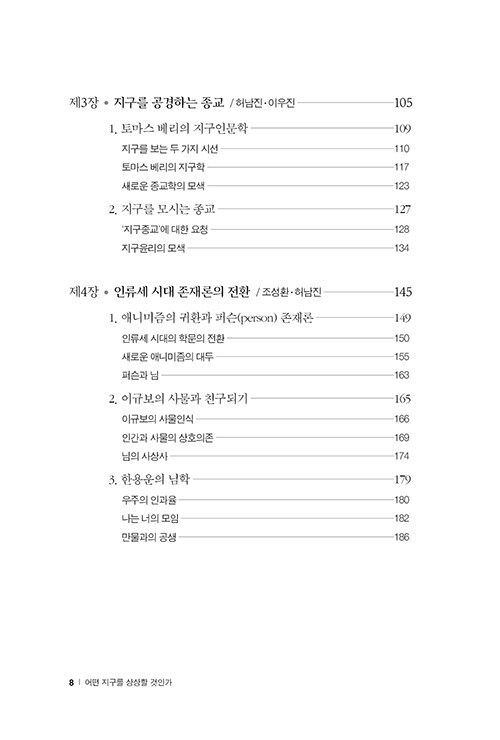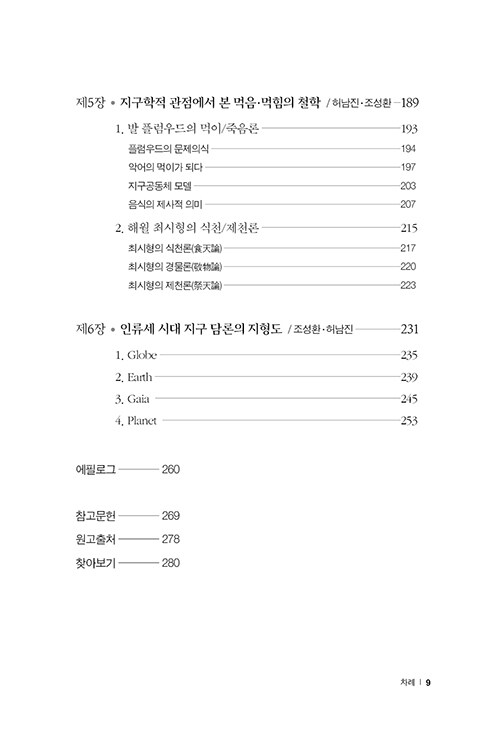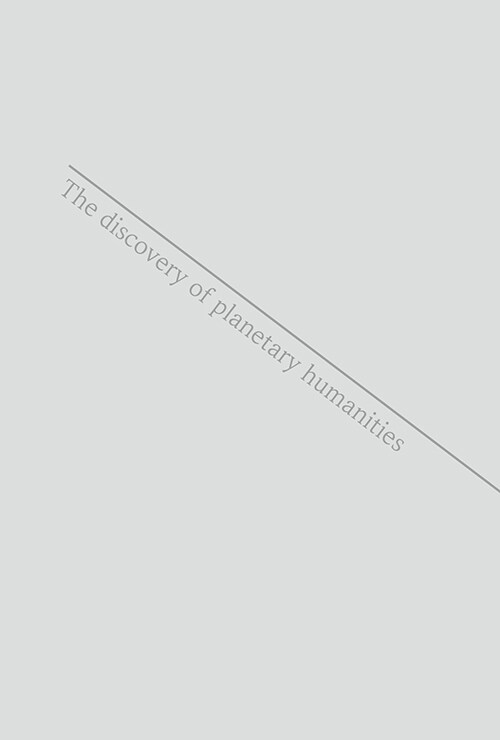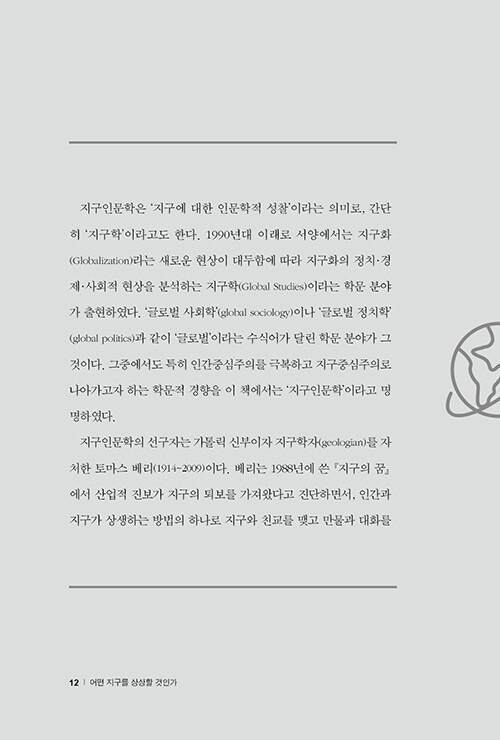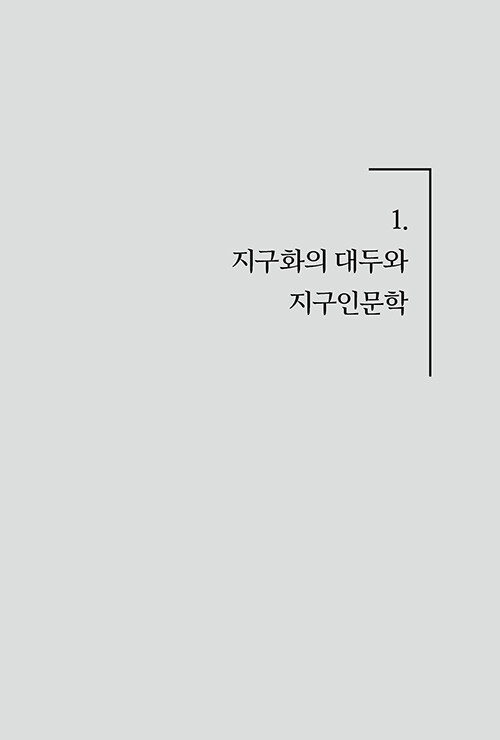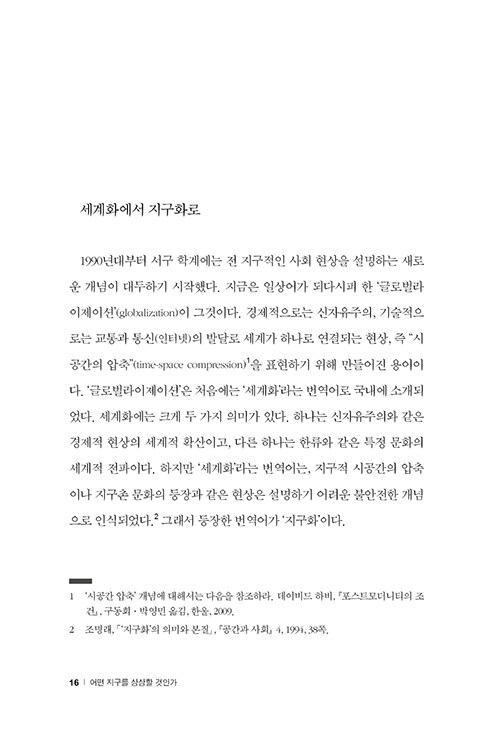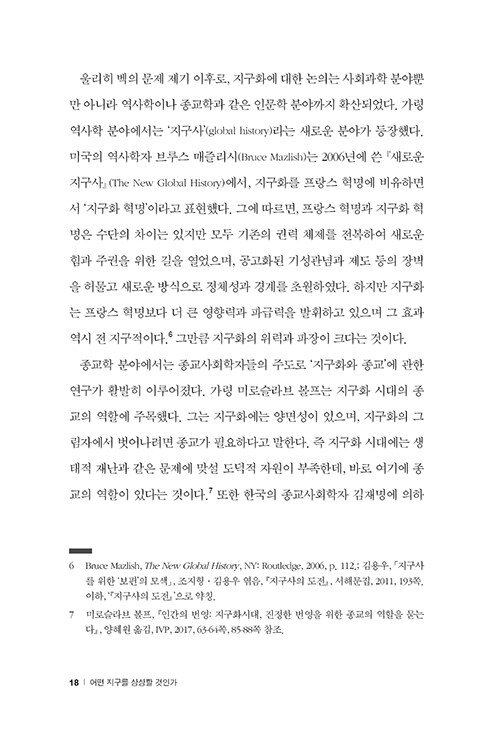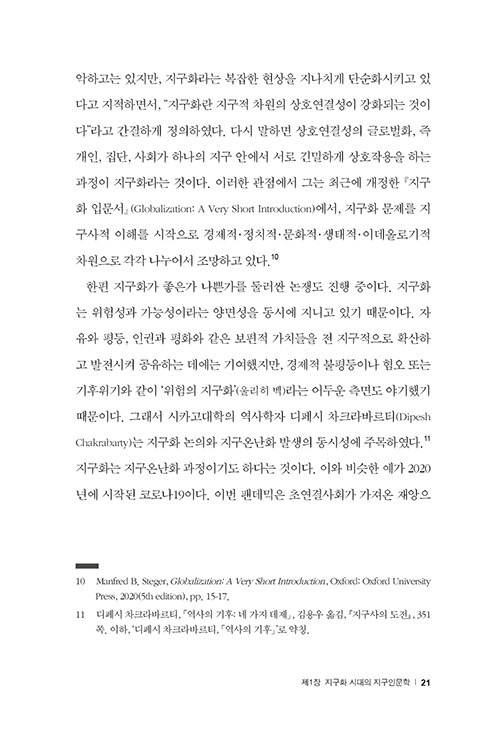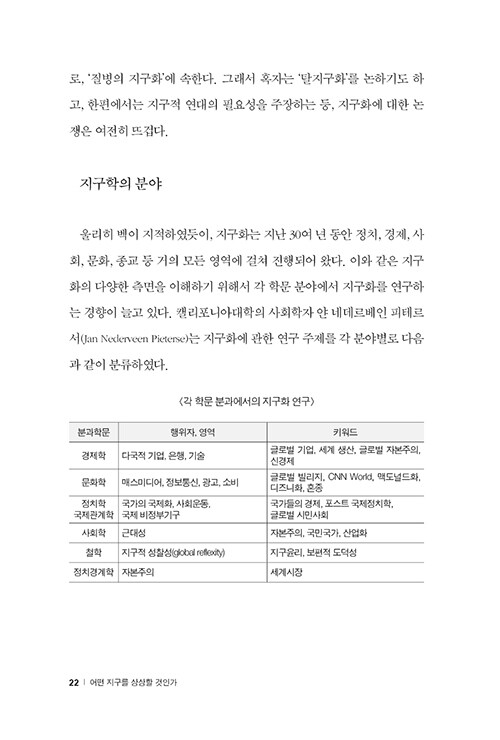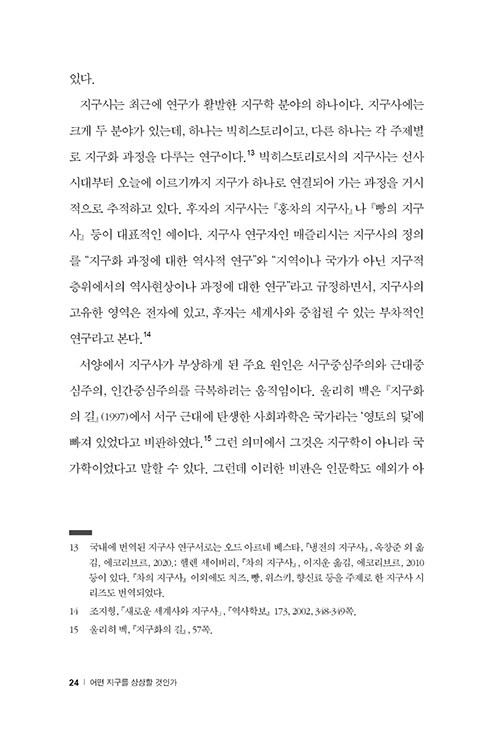1997 edition
Quantum Theology: Spiritual Implications of the New Physics Paperback – 30 April 2004
by Diarmuid O'Murchu (Author)
4.3 4.3 out of 5 stars 67 ratings
From black holes to holograms, from relativity theory to the discovery of quarks, this book is an original and rich exposition of quantum theory and the way it unravels profound theological questions.
===
Here, best-selling author Diarmuid O'Murchu presents a vision of the intersection of quantum physics and spirituality. It is now revised to reflect the most recent advances in physics. From black holes to holograms, from relativity theory to the discovery of quarks, this book is an original and rich exposition of quantum theory and the way it unravels profound theological questions.
Genres
Spirituality
Science
Theology
Religion
Philosophy
Nonfiction
Catholic
...more
256 pages, Paperback
Published April 1, 2004
===
Print length
256 pagesbought together
This item: Quantum Theology: Spiritual Implications of the New Physics
$30.57$30.57
Product details
Publisher : Crossroad Publishing Co ,U.S.; Revised, Updated ed. edition (30 April 2004)
Language : English
Paperback : 256 pages
4.3 4.3 out of 5 stars 67 ratings
Top reviews
Top reviews from Australia
There are 0 reviews and 0 ratings from Australia
Top reviews from other countries

John Lawless
5.0 out of 5 stars Challenging and InspiringReviewed in the United Kingdom on 10 September 2019
Verified Purchase
The writings of Diarmuid O'Murchu are a wonderful gift to us, insightful, at the cutting edge of theology and most of all “spiritual” in the broadest sense of that word. He is accomplished, having written at least 15 books to date as well as contributing to a wide range of journals. This is the third book I have read by this author and what strikes me about him is that over the years there has been a steady development in his thinking. As a social psychologist who has spent most of whose working life in social ministry, coming through his work is a synthesis of many academic disciplines which are inspired by his pastoral experience. This current book is no exception and is written and produced to a very high standard. It is fascinating, informative and provocative, challenging the atrophied structures of the church and the stagnation of thought in sections of contemporary theology. It is brave to make the links between the developments in cosmic physics/chaos theory/waves and particles and our understanding of God, the divine energy, the omega point of evolution, the dance of the universe. He alerts us to the probability that we are out of tune with the energies that formed and mould us but affirms that the universal search for meaning compels us to explore not just the physical world but, simultaneously, the mysterious forces of Eros. Inspiring and challenging. I liked this book so much that I have already pre-ordered his O’Murchu’s next book “When the Disciple Comes of Age”. Be prepared to be challenged.
Read less
3 people found this helpfulReport

Amazon Customer
4.0 out of 5 stars Not for the faint hearted, but...Reviewed in the United Kingdom on 25 May 2016
Verified Purchase
This is a heavy read, I'll be honest, and I struggled to finish it, so it's not one for the beach. However, if you are prepared to give it the attention it deserves, and prepared for the possibility that some of it will sail right over your head, you will find in it great inspiration and food for thought. For me, it became a springboard for similar reading.
3 people found this helpfulReport

Gregory Davidson
5.0 out of 5 stars Convergence among science, philosophy, and theology?Reviewed in the United States on 9 October 2016
Verified Purchase
A wonderful exploration of what appears to be a growing convergence between science, philosophy, and theology (and perhaps even ontology) as we use quantum mechanics to delve deeper and deeper into the foundational workings of the universe. Truly fascinating, informative, provocative, and readable. O'Murchu takes these mind-bending topics and opens them up for everyone...though your head will still hurt as you try to take it all in. ;-)
10 people found this helpfulReport

patriciarae
3.0 out of 5 stars brilliant synthesis of faith and science, however...Reviewed in the United States on 7 May 2014
Verified Purchase
Our book club chose this selection and we took about 7 weeks to discuss it slowly and in depth. It is not an easy read.. However for those interested in one of the cutting edge books on this topic, it is a good choice. Our entire book group felt glad we chose to "do" this book together. I cannot fathom reading it alone. The 3 stars are for my response and do not reflect anything negative about the author or the book.
7 people found this helpfulReport

George
4.0 out of 5 stars A great effortReviewed in the United States on 29 July 2003
Verified Purchase
Like so many I know everything is in transition. The book gave me something to consider, of course he puts alot of political correct spins on it, feminism, anti industrial ya, ya, stuff. But the book does offer food for thought and I will look forward to viewing some more of his work in the near future.
6 people found this helpfulReport
====
Displaying 1 - 10 of 11 reviews

Johnny
10 books · 122 followers
Follow
August 22, 2015
In Quantum Theology: Spiritual Implications of the New Physics, Diarmuid O’Murchu summarizes the move from a classical model of scientific knowledge to a more “wholistic” approach demanded by current understandings of quantum physics. Quoting Meg Wheatley (Harvard-trained expert in organizational behavior), he quickly establishes the reason this is significant for modern thinkers who are not necessarily in the so-called scientific fields. “I try hard to discipline myself to remain aware of the whole and to resist my well-trained desire to analyze the parts to death. I now look for patterns of movement over time and focus on qualities like rhythm, flow, and shape. …I know I am wasting time whenever I draw straight arrows between two variables in a cause-and-effect diagram. ….I realize more and more that the universe will not cooperate with my desires for determinism.” (p. 37)
Building on the concept of entanglement (“A manifestation of one quantum object, caused by our observation, simultaneously influences its correlated twin object—no matter how far apart they are--quantum action at a distance. (p. 29)), O’Murchu argues that the nature of reality demands “relationships” as opposed to causality (p. 36) and opens one up to a necessary “mystical receptivity.” (p. 38) He warns that the parameters of scientific observation may actually end up falsifying rather than verifying truth (p. 34).
Part of O’Murchu’s conceptualizing is unpacking what quantum theory means for everyday life. To do so requires metaphors and he chose dance and music. Why do we find that we “resonate” in conjunction with things that touch us, inspire us, or convince us? Isn’t it because we are finding a “harmony” with reality? Hence, “We can conceive of a universe in which the spheres themselves are dancing, and from the musical vibrations we are beginning to glimpse a whole new sense of what the universal life is all about. …The energy that animates and enlivens all of life may well be supersonically melodious, and the life force itself may be something more akin to an orchestra than to any spiral of subatomic particles.” (p. 55) In such a fashion, O’Murchu invites readers to a dance of participation in the universe rather than conquest or opposition. He advocates viewing the universe (or multiverse if such it may be) as “…not a landscape of facts or objects, but one of events, process, movement, and energy.” (p. 63)
Those wondering where the “physics” has gone will recognize where O’Murchu is going when one reads the discussion of field theory. O’Murchu even suggests that there are morphogenetic fields that allow for both stability and change. Indeed, he suggests this may be a more accurate understanding than “natural selection” as expressed by Darwin (p. 74). Then, he quotes Stephen Rose to just that effect when Rose writes of life that is “…autopoietically constructed through the interplay of i) physical forces, ii) the intrinsic chemistry of lipids and proteins, iii) the self-organizing and stabilizing properties of complex metabolic webs, and iv) the specificity of genes which permit the elasticity of ontogeny.” (p. 75)
The process of becoming, O’Murchu goes on to explain requires both continuity and change (sounds a lot like Freud in Chapter Four of Beyond the Pleasure Principle when he writes of both receptivity and resistance in the living cell/system) here and later in the book about the process of dissipation and integration (p. 179). This stability which, in turn, adapts, he calls morphic resonance after Rupert Sheldrake. And I loved the way he connected the monkey phenomenon (of changed eating habits in the monkey population of Japan—even when there was no physical contact—p. 75) from the 1950s in Japan conceptually with Jung’s collective unconscious (p. 76). Or even, perhaps, it may fit in with the idea of Wolfhart Pannenberg that field theory may be a scientific explanation of what the Judeo-Christian theology calls the Holy Spirit (p. 80). [Note: Pannenberg has a scientific background and has written prolifically while drawing from both of his formal studies in science and theology.]
The discussion considers the disappointment of scientists who discovered that quarks (and their opposites, leptons) refused to be broken apart as the building blocks of the universe but only survived in groups of two or three (p. 86). Naturally, this observation led O’Murchu to consider the Christian doctrine of the Trinity and Trinitarian formulations in Hinduism, Buddhism, Zoroastrianism, and even Ancient Egyptian religion (none exclusively Trinitarian, but having a dominant tri-partite expression—p. 88) and the necessity of a three-dimensional basis for the universe in terms of spatial survival and creative expression (more than three dimensions can create instability and two dimensions become so static and ordered that growth and movement aren’t possible—p. 89). So, we see how both comparative religion and the cosmos point to the idea “…that the essential nature of God is about relatedness and the capacity to relate, that the propensity and power to relate is, in fact, the very essence of God. …In the plain but profound language of the Christian Bible: God is love!” (p. 88)
After discussing the importance of relationships, there is an important caveat, “The more we try to invent community along specific lines—cultural, social, or religious—the more we endanger the possibility of its meaningful existence.” (p. 94) Rather, the essence of creativity and development is fluidity, flexibility, and process (p. 104) which allows both vague, chaotic realities and even “creative vacuum” as keys to self-organization within the meta-field of existence (p. 111). A quotation from Peter Coveney well illustrates this: “Chaos is just a special but very interesting form of self-organization in which there is an overload of order.” (p. 131)
Theologically, the book takes an interesting path in this section. “There is a paradoxical quality to black holes, whereby their destructive power of absorption seems to be a precondition for their life-giving power of ‘evaporation.’ …Perhaps here we have on a grand cosmic scale an insight known to mystics for centuries: abnegation is a precondition for fulfillment; struggle is a pathway to happiness; sickness is the shadow side of health; failure is success in disguise; Calvary precedes resurrection; darkness gives way to light.” (p. 135) Much like the Apostle Paul in Colossians, O’Murchu recognizes that there is no “newness” without a painful termination of the old (p. 141). Unfortunately, in seeking this “newness,” O’Murchu goes rather too far in his abnegation of the individual and defining individualism as always being part of the tyranny of power. He seems so optimistic about the eventual triumph of goodness in the universe; why isn’t he convinced of the ability for human individuals to change within those relationships held to be so important? That’s my problem with the direction of this book which holds so many great insights.
For me, Quantum Theology goes off the rails a this point. It is possible to become so syncretistic that there is no real distinction between any religions and so focused on “totality” that there is no longer any significance to an individual’s decisions. True, the neglect of relationship and identification with the universal “morphogenetic field” leads to a self-determination that can become self-diminution (p. 151), but does it have to do so? Isn’t there a balance between the search for enlightenment and light within this “field” and some sense of personal accountability and responsibility? I like O’Murchu’s concept of sound as a metaphor for cosmic origins and light as a metaphor for ultimate destiny (p. 171), but doesn’t he realize that even light can be refracted and distorted?
He states that only fundamentalists believe in a literal “end of the world” (p. 183), but doesn’t consider that there could be such a, pardon the expression, fundamental change that even if the universe continues, it might not be relevant to the type of life to which he is writing. I guess I’m just fundamentalist enough to believe that the “new heaven” and “new earth” could share some of the “morphogenetic field” of which O’Murchu speaks without being locked into the idea that world must continue as per our current experience or understanding. O’Murchu seems to expect some kind of evolutionary change which precludes a continuation of identity—not really taking into consideration his own science of “action-at-a-distance” where two particles, separated in space-time act the same when affected by a field of circumstances/observation.
Although the conclusion of this theology is about the need for love and follows Sally McFague’s idea of Trinity as Mother (Parent?) [agape—giving love], Lover [eros—relational/healing love], and Friend [philia—covenant, faithful, sustaining love] (p. 205), I felt like the strongest idea was his comparison (as with Teilhard de Chardin) of love as being like a fire “…with the paradoxical combination of warmth, tenderness, care, and closeness, on the one hand, and an enormous power for destructibility, on the other.” (p. 200) With all of his discussion of love, this book needed a little more talk about the danger of love contaminated by the self-determination of individuals seeking their own power and gratification in the name of love.
science theology
2 likes
Like
Comment
Steven H
923 reviews · 1 follower
Follow
September 9, 2023
A PRIEST LOOKS AT ‘THEOLGICAL’ IMPLICATIONS OF THE QUANTUM THEORY
Priest and social psychologist Diarmuid O’Murchu wrote in the Introduction to the Revised Edition of this 2004 book, “The original inspiration [for this book] goes back to 1990 when… I stumbled on a number of books popularizing the quantum theory for nonscientists like myself… my curiosity was quickened as never before. Many things began to fall into place and what till then were fragmented aspects of my experience and understanding of life began to cohere around a new vision…”
He states in the first chapter, “I open this book with an invitation: Come with me on a journey of exploration; let’s link arms in a trajectory whose direction and destiny we’ll discover as we go along. Enter into the experience of searching, seeking, exploring, and, I hope, discovering. Participate in the task rather than remain a mere observer… The journey is all about an EXPERIENCE; of a world awakening to its own inner meaning and mystery, a world we can no longer comprehend purely in scientific terms nor in exclusively religious dogmas, but in the emerging dialogue that enables both fields of learning to meet and interact in a new way, which I have chosen to call ‘quantum theology.’ … We are not journeying IN the universe but WITH the universe… We are parts of a whole, much greater than the sum of its parts, and yet within each part we are interconnected with the whole.” (Pg. 6-7)
He explains, “It seems important that we differentiate between ‘spirituality’ and ‘religion.’ Spirituality is inherent to the human condition… in my estimation, religion is not. Spirituality has an enduring quality… religion serves a transitory and temporary purpose. Theology, therefore, as that body of wisdom which seeks to explore ultimate meaning, has a great deal more in common with spiritual than with religion. Theology, as faith seeking understanding, belongs to the primal and primordial aspirations that underpin the search for meaning, predating religion by thousands of years.” (Pg. 14)
He laments, “Perhaps the greatest disservice that formal religion has rendered to our world is its tendency to disrupt the dance. It tried to project God out of creation into the ‘divine’ realms of the church (on earth) and heaven (in the world beyond). It has led us into a speculative, cerebral mode (of thought and action), which ultimately was not about devotion and worship, but an insatiable desire to control the capricious power of the Deity.” (Pg. 48)
He states is ‘first principle of quantum theology’: “There is more to our world than what can be perceived by the human senses or envisaged by the human imagination. Life is sustained by a creative energy, fundamentally benign in nature, with a tendency to manifest and express itself in movement, rhythm, and pattern. Creation is sustained by a superhuman, pulsating restlessness, a type of resonance vibrating throughout time and eternity.” (Pg. 55)
He continues, “In traditional theology, there tends to be an emphasis on the God who creates from nothing… and is therefore superior and external to the created order… In quantum theology, the creative potential emerges (evolves) from WITHIN the cosmos. God co-creates in conjunction with the evolutionary process.” (Pg. 56) Later, he adds, “the quantum theologian is concerned with church at the heart of the world rather than with church over against the world. And church is, first and foremost, community gathered around the exploration the articulation of a deep, spiritual yearning.” (Pg. 96)
He notes, “we offer another central element of quantum theology: Because the capacity to relate is itself the primary divine energy impregnating creation, we humans need authentic ecclesial and sacramental experiences to explore and articulate our innate vocation to be people in relationship.” (Pg. 96)
He asserts, “we live in an ALIVE UNIVERSE… what do we mean when we claim that the universe is alive?... We need to listen and be receptive to the evolutionary story itself. When we choose to listen, we begin to glimpse the deeper meaning, as it is manifested to us in that aspect of creation than we humans are most closely connected, namely, Planet Earth itself.” (Pg. 105)
He adds, “We conclude with another key principle employed by the quantum theologian: Our passionate desire to understand in depth will not be attained by intellectual prowess or technological achievement, but by immersing ourselves in the divine, evolutionary story and committing ourselves to the contemplation and narration of that story in each new epoch.” (Pg. 116)
He summarizes, “Quantum theology offers a very different set of insights: 1. Creation is an unbroken whole, a totality within which everything---including darkness, chaos, pain, and suffering---plays in independent role in the evolving cycle of creation and destruction… 2. Creation is essentially GOOD and not EVIL… 3. Much of the meaningless pain and suffering is directly, and often deliberately, caused by human beings… 4. Dualistic thought patterns, and the major institutions that thrive on dualistic value systems, exacerbate the meaninglessness of pain and suffering in our world… 5. … How the passion and death of Jesus atoned for human sin, in a once-for-all manner, is a cherished though poorly understood tenet of Christian theology.” (Pg. 141-142)
He adds, “quantum theology adopts the following statement as a key principle: Structural and systemic sin abounds in our world, often provoking people to behave immorally. To integrate the global shadow, we need fresh moral and ethical guidelines to address the structural and systemic sinfulness of our time. The formulation of these guidelines is as much a political as a religious obligation.” (Pg. 158)
He notes, “According to the old theology, in death, we humans became A-COSMIC, that is, cut off from the cosmos. In our new understanding, we become PAN-COSMIC; we enter into a new relationship with the WHOLE cosmos. In our earthly life, we were confined to one part of the cosmos, and to a constricted way of experiencing it. In death, we are released into a potential relationship with the whole of universal life.” (Pg. 181)
He argues, "Genitality is no longer reserved for heterosexual monogamous relationships, never mind for marital union. It has become a dimension of human intimacy in the many different situations in which people seek to express tenderness, affection, and mutuality. There seems to be an enormous reluctance to acknowledge this new development… Culturally, politically, and theologically, it has far more serious implications than the so-called sexual revolution of the 1960s.” (Pg. 202)
In an Appendix, he states al twelve of his ‘Principles of Quantum Theology’; for example, “Principle 1: Life is sustained by a creative energy, fundamentally benign in nature… Principle 2: Wholeness… is the wellspring of all possibility… Principle 3: Evolution is underpinned by a deep unfolding structure… Principle 4: The expanding horizon of divine belonging is the context in which revelation takes place… Principle 5: … we humans need authentic ecclesial and sacramental experiences to explore and articulate our innate vocation to be people in relationship… Principle 6: Ultimate meaning is embedded in story, not in facts… Principle 7: Redemption is planetary (and cosmic) as well as personal… Principle 8: Structural and systemic sin abounds in our world… Principle 9: … our final destiny… is that of enlightenment… Principle 10: The concepts of beginning and end, along with the theological notions ore resurrection and reincarnation, are invoked as dominant myths to help us … make sense of our infinite destiny in an infinite universe… Principle 11: Extinction and transformation… are central coordinates of cosmic and planetary evolution… Principle 12: Love is an independent life force, a spectrum of possibility ranging from its ultimate divine grandeur to its particularity in subatomic interaction. It is the origin and goal of our search for meaning.” (Pg. 209-214)
This book may interest those seeking an integration of theological concepts with quantum physics.
Like
Comment

Corey
100 reviews
Follow
June 9, 2012
A very thought-provoking, provocative, and dense book that uniquely uses recent discoveries and theories within quantum science to build a systematic theology of human spirituality. I have not encountered anything like it before. I suspect that the book never hit popular markets due to its reliance on complicated concepts and largely undeveloped quantum science. However, I found it fascinating, and many of the author's conclusions ring true to experience. The author sees religion as "the greatest idolatry of all time" and the greatest impediment to human spirituality and connecting with the divine. He accurately observes that "formal religion is a recent visitor to Planet Earth." He explores the way in which quantum theory has done away with previous ideas of autonomy in nature, and explores how the interrelatedness and interdependence of all life has profound spiritual implications. A good read, but as other reviews have warned, don't expect to be able to digest it quickly.
Show more
1 like
Like
Comment

Harry Moore
1 review
Follow
December 13, 2012
I believe that the relationship between science and theology needed to brought to the fore front of conversations. We spend lots of time trying to make sense of the both. Now for those who are new to the Idea of the special relationship, this combo can be a bit unnerving and feel that the purity of history of belief is tarnished, but I can say from personal experience and intuitiveness the topics are twins just realizing they have the common mother. We have an opportunity in this life time to give witness to the unique special entanglement as it unfold before our eyes.
The Author really brings light to the subject and the use of references is great! I have a tendency to read the references material if I like the Author. He hit a home run with me in this book.
1 like
Like
Comment

Michael Taouk
27 reviews · 4 followers
Follow
February 20, 2013
The book seems to be written more for the benefit of readers with a theology background than anyone else. Anyone who has studied science beyond high school cannot avoid the beauty, mystery and majesty of the world around us. For those of us who have some understanding of science and also seek God, our perception of God is primarily shaped by our understanding of creation. As modern science moves forward, it points to a increasingly awesome God.
O'Murchu's focus on "Quantum Theory" is annoying, because Quantum Theory is only the tip of the iceberg. Perhaps theologians should study more science and less scripture :) .... I will continue reading ...
1 like
Like
Comment

Jodi
90 reviews · 8 followers
Follow
February 15, 2009
Everything Father Diarmuid writes is a struggle for me to comprehend but the end result is one where I feel enhanced by a greater understanding of what God has done in His creative work.
1 like
Like
Comment
Susan Marrier
212 reviews · 2 followers
Follow
April 12, 2018
I'd like to give this book a 4.5 rating. I don't know where to begin to review it, but I think it is a very important book for our times, very challenging in parts, but his conclusions are satisfying. I especially found it strangely comforting to realize that the universe has apparently always been dying and rising again, and that species rise and disappear, and that homo sapiens will do likewise, but the universe will go on without us, perhaps giving rise to another species on earth that will do a better job than we have, as we enter a larger consciousness. If interested, I recommend that you read the reviews of some of the other readers who are more articulate than I, and then get the book and read it through even if you do not understand all of it.
spirituality
Like
Comment

David Corbet
6 books · 11 followers
Follow
December 17, 2010
An excellent book and great introduction to the new roads that theology may be taking over this next century. We are standing at such a pivotal point, theologically speaking, it will be very interesting to see how the future unfolds as more and more theologians begin to reflect upon the changes in science and culture. This book is a great place to begin the reflection process. It will most definitely go on my "read again" pile. The best part of this book is the exhaustive bibliography at the back.
Like
Comment
Susan
782 reviews · 13 followers
Follow
August 24, 2015
This is a great book that addresses how science, specifically quantum physics can and should impact one's spirituality. Understanding we are part of an infinite cosmos can certainly broaden one's understanding of who God is and the impact it has on one's response to that understanding.
There were a few points I would disagree, but being open to the dialogue is what is important ~ there is always room to learn and grow in understanding.
theology
Like
Comment
Renee
18 reviews
Follow
ReadJanuary 19, 2013
I love this book. An accessible insight intoa deep and powerful concept of spirituality.
Like
Comment
Displaying 1 - 10 of 11 reviews
More reviews and ratings
===
Print length
256 pagesbought together
This item: Quantum Theology: Spiritual Implications of the New Physics
$30.57$30.57
Product details
Publisher : Crossroad Publishing Co ,U.S.; Revised, Updated ed. edition (30 April 2004)
Language : English
Paperback : 256 pages
4.3 4.3 out of 5 stars 67 ratings
Top reviews
Top reviews from Australia
There are 0 reviews and 0 ratings from Australia
Top reviews from other countries
John Lawless
5.0 out of 5 stars Challenging and InspiringReviewed in the United Kingdom on 10 September 2019
Verified Purchase
The writings of Diarmuid O'Murchu are a wonderful gift to us, insightful, at the cutting edge of theology and most of all “spiritual” in the broadest sense of that word. He is accomplished, having written at least 15 books to date as well as contributing to a wide range of journals. This is the third book I have read by this author and what strikes me about him is that over the years there has been a steady development in his thinking. As a social psychologist who has spent most of whose working life in social ministry, coming through his work is a synthesis of many academic disciplines which are inspired by his pastoral experience. This current book is no exception and is written and produced to a very high standard. It is fascinating, informative and provocative, challenging the atrophied structures of the church and the stagnation of thought in sections of contemporary theology. It is brave to make the links between the developments in cosmic physics/chaos theory/waves and particles and our understanding of God, the divine energy, the omega point of evolution, the dance of the universe. He alerts us to the probability that we are out of tune with the energies that formed and mould us but affirms that the universal search for meaning compels us to explore not just the physical world but, simultaneously, the mysterious forces of Eros. Inspiring and challenging. I liked this book so much that I have already pre-ordered his O’Murchu’s next book “When the Disciple Comes of Age”. Be prepared to be challenged.
Read less
3 people found this helpfulReport
Amazon Customer
4.0 out of 5 stars Not for the faint hearted, but...Reviewed in the United Kingdom on 25 May 2016
Verified Purchase
This is a heavy read, I'll be honest, and I struggled to finish it, so it's not one for the beach. However, if you are prepared to give it the attention it deserves, and prepared for the possibility that some of it will sail right over your head, you will find in it great inspiration and food for thought. For me, it became a springboard for similar reading.
3 people found this helpfulReport
Gregory Davidson
5.0 out of 5 stars Convergence among science, philosophy, and theology?Reviewed in the United States on 9 October 2016
Verified Purchase
A wonderful exploration of what appears to be a growing convergence between science, philosophy, and theology (and perhaps even ontology) as we use quantum mechanics to delve deeper and deeper into the foundational workings of the universe. Truly fascinating, informative, provocative, and readable. O'Murchu takes these mind-bending topics and opens them up for everyone...though your head will still hurt as you try to take it all in. ;-)
10 people found this helpfulReport
patriciarae
3.0 out of 5 stars brilliant synthesis of faith and science, however...Reviewed in the United States on 7 May 2014
Verified Purchase
Our book club chose this selection and we took about 7 weeks to discuss it slowly and in depth. It is not an easy read.. However for those interested in one of the cutting edge books on this topic, it is a good choice. Our entire book group felt glad we chose to "do" this book together. I cannot fathom reading it alone. The 3 stars are for my response and do not reflect anything negative about the author or the book.
7 people found this helpfulReport
George
4.0 out of 5 stars A great effortReviewed in the United States on 29 July 2003
Verified Purchase
Like so many I know everything is in transition. The book gave me something to consider, of course he puts alot of political correct spins on it, feminism, anti industrial ya, ya, stuff. But the book does offer food for thought and I will look forward to viewing some more of his work in the near future.
6 people found this helpfulReport
====
Displaying 1 - 10 of 11 reviews

Johnny
10 books · 122 followers
Follow
August 22, 2015
In Quantum Theology: Spiritual Implications of the New Physics, Diarmuid O’Murchu summarizes the move from a classical model of scientific knowledge to a more “wholistic” approach demanded by current understandings of quantum physics. Quoting Meg Wheatley (Harvard-trained expert in organizational behavior), he quickly establishes the reason this is significant for modern thinkers who are not necessarily in the so-called scientific fields. “I try hard to discipline myself to remain aware of the whole and to resist my well-trained desire to analyze the parts to death. I now look for patterns of movement over time and focus on qualities like rhythm, flow, and shape. …I know I am wasting time whenever I draw straight arrows between two variables in a cause-and-effect diagram. ….I realize more and more that the universe will not cooperate with my desires for determinism.” (p. 37)
Building on the concept of entanglement (“A manifestation of one quantum object, caused by our observation, simultaneously influences its correlated twin object—no matter how far apart they are--quantum action at a distance. (p. 29)), O’Murchu argues that the nature of reality demands “relationships” as opposed to causality (p. 36) and opens one up to a necessary “mystical receptivity.” (p. 38) He warns that the parameters of scientific observation may actually end up falsifying rather than verifying truth (p. 34).
Part of O’Murchu’s conceptualizing is unpacking what quantum theory means for everyday life. To do so requires metaphors and he chose dance and music. Why do we find that we “resonate” in conjunction with things that touch us, inspire us, or convince us? Isn’t it because we are finding a “harmony” with reality? Hence, “We can conceive of a universe in which the spheres themselves are dancing, and from the musical vibrations we are beginning to glimpse a whole new sense of what the universal life is all about. …The energy that animates and enlivens all of life may well be supersonically melodious, and the life force itself may be something more akin to an orchestra than to any spiral of subatomic particles.” (p. 55) In such a fashion, O’Murchu invites readers to a dance of participation in the universe rather than conquest or opposition. He advocates viewing the universe (or multiverse if such it may be) as “…not a landscape of facts or objects, but one of events, process, movement, and energy.” (p. 63)
Those wondering where the “physics” has gone will recognize where O’Murchu is going when one reads the discussion of field theory. O’Murchu even suggests that there are morphogenetic fields that allow for both stability and change. Indeed, he suggests this may be a more accurate understanding than “natural selection” as expressed by Darwin (p. 74). Then, he quotes Stephen Rose to just that effect when Rose writes of life that is “…autopoietically constructed through the interplay of i) physical forces, ii) the intrinsic chemistry of lipids and proteins, iii) the self-organizing and stabilizing properties of complex metabolic webs, and iv) the specificity of genes which permit the elasticity of ontogeny.” (p. 75)
The process of becoming, O’Murchu goes on to explain requires both continuity and change (sounds a lot like Freud in Chapter Four of Beyond the Pleasure Principle when he writes of both receptivity and resistance in the living cell/system) here and later in the book about the process of dissipation and integration (p. 179). This stability which, in turn, adapts, he calls morphic resonance after Rupert Sheldrake. And I loved the way he connected the monkey phenomenon (of changed eating habits in the monkey population of Japan—even when there was no physical contact—p. 75) from the 1950s in Japan conceptually with Jung’s collective unconscious (p. 76). Or even, perhaps, it may fit in with the idea of Wolfhart Pannenberg that field theory may be a scientific explanation of what the Judeo-Christian theology calls the Holy Spirit (p. 80). [Note: Pannenberg has a scientific background and has written prolifically while drawing from both of his formal studies in science and theology.]
The discussion considers the disappointment of scientists who discovered that quarks (and their opposites, leptons) refused to be broken apart as the building blocks of the universe but only survived in groups of two or three (p. 86). Naturally, this observation led O’Murchu to consider the Christian doctrine of the Trinity and Trinitarian formulations in Hinduism, Buddhism, Zoroastrianism, and even Ancient Egyptian religion (none exclusively Trinitarian, but having a dominant tri-partite expression—p. 88) and the necessity of a three-dimensional basis for the universe in terms of spatial survival and creative expression (more than three dimensions can create instability and two dimensions become so static and ordered that growth and movement aren’t possible—p. 89). So, we see how both comparative religion and the cosmos point to the idea “…that the essential nature of God is about relatedness and the capacity to relate, that the propensity and power to relate is, in fact, the very essence of God. …In the plain but profound language of the Christian Bible: God is love!” (p. 88)
After discussing the importance of relationships, there is an important caveat, “The more we try to invent community along specific lines—cultural, social, or religious—the more we endanger the possibility of its meaningful existence.” (p. 94) Rather, the essence of creativity and development is fluidity, flexibility, and process (p. 104) which allows both vague, chaotic realities and even “creative vacuum” as keys to self-organization within the meta-field of existence (p. 111). A quotation from Peter Coveney well illustrates this: “Chaos is just a special but very interesting form of self-organization in which there is an overload of order.” (p. 131)
Theologically, the book takes an interesting path in this section. “There is a paradoxical quality to black holes, whereby their destructive power of absorption seems to be a precondition for their life-giving power of ‘evaporation.’ …Perhaps here we have on a grand cosmic scale an insight known to mystics for centuries: abnegation is a precondition for fulfillment; struggle is a pathway to happiness; sickness is the shadow side of health; failure is success in disguise; Calvary precedes resurrection; darkness gives way to light.” (p. 135) Much like the Apostle Paul in Colossians, O’Murchu recognizes that there is no “newness” without a painful termination of the old (p. 141). Unfortunately, in seeking this “newness,” O’Murchu goes rather too far in his abnegation of the individual and defining individualism as always being part of the tyranny of power. He seems so optimistic about the eventual triumph of goodness in the universe; why isn’t he convinced of the ability for human individuals to change within those relationships held to be so important? That’s my problem with the direction of this book which holds so many great insights.
For me, Quantum Theology goes off the rails a this point. It is possible to become so syncretistic that there is no real distinction between any religions and so focused on “totality” that there is no longer any significance to an individual’s decisions. True, the neglect of relationship and identification with the universal “morphogenetic field” leads to a self-determination that can become self-diminution (p. 151), but does it have to do so? Isn’t there a balance between the search for enlightenment and light within this “field” and some sense of personal accountability and responsibility? I like O’Murchu’s concept of sound as a metaphor for cosmic origins and light as a metaphor for ultimate destiny (p. 171), but doesn’t he realize that even light can be refracted and distorted?
He states that only fundamentalists believe in a literal “end of the world” (p. 183), but doesn’t consider that there could be such a, pardon the expression, fundamental change that even if the universe continues, it might not be relevant to the type of life to which he is writing. I guess I’m just fundamentalist enough to believe that the “new heaven” and “new earth” could share some of the “morphogenetic field” of which O’Murchu speaks without being locked into the idea that world must continue as per our current experience or understanding. O’Murchu seems to expect some kind of evolutionary change which precludes a continuation of identity—not really taking into consideration his own science of “action-at-a-distance” where two particles, separated in space-time act the same when affected by a field of circumstances/observation.
Although the conclusion of this theology is about the need for love and follows Sally McFague’s idea of Trinity as Mother (Parent?) [agape—giving love], Lover [eros—relational/healing love], and Friend [philia—covenant, faithful, sustaining love] (p. 205), I felt like the strongest idea was his comparison (as with Teilhard de Chardin) of love as being like a fire “…with the paradoxical combination of warmth, tenderness, care, and closeness, on the one hand, and an enormous power for destructibility, on the other.” (p. 200) With all of his discussion of love, this book needed a little more talk about the danger of love contaminated by the self-determination of individuals seeking their own power and gratification in the name of love.
science theology
2 likes
Like
Comment
Steven H
923 reviews · 1 follower
Follow
September 9, 2023
A PRIEST LOOKS AT ‘THEOLGICAL’ IMPLICATIONS OF THE QUANTUM THEORY
Priest and social psychologist Diarmuid O’Murchu wrote in the Introduction to the Revised Edition of this 2004 book, “The original inspiration [for this book] goes back to 1990 when… I stumbled on a number of books popularizing the quantum theory for nonscientists like myself… my curiosity was quickened as never before. Many things began to fall into place and what till then were fragmented aspects of my experience and understanding of life began to cohere around a new vision…”
He states in the first chapter, “I open this book with an invitation: Come with me on a journey of exploration; let’s link arms in a trajectory whose direction and destiny we’ll discover as we go along. Enter into the experience of searching, seeking, exploring, and, I hope, discovering. Participate in the task rather than remain a mere observer… The journey is all about an EXPERIENCE; of a world awakening to its own inner meaning and mystery, a world we can no longer comprehend purely in scientific terms nor in exclusively religious dogmas, but in the emerging dialogue that enables both fields of learning to meet and interact in a new way, which I have chosen to call ‘quantum theology.’ … We are not journeying IN the universe but WITH the universe… We are parts of a whole, much greater than the sum of its parts, and yet within each part we are interconnected with the whole.” (Pg. 6-7)
He explains, “It seems important that we differentiate between ‘spirituality’ and ‘religion.’ Spirituality is inherent to the human condition… in my estimation, religion is not. Spirituality has an enduring quality… religion serves a transitory and temporary purpose. Theology, therefore, as that body of wisdom which seeks to explore ultimate meaning, has a great deal more in common with spiritual than with religion. Theology, as faith seeking understanding, belongs to the primal and primordial aspirations that underpin the search for meaning, predating religion by thousands of years.” (Pg. 14)
He laments, “Perhaps the greatest disservice that formal religion has rendered to our world is its tendency to disrupt the dance. It tried to project God out of creation into the ‘divine’ realms of the church (on earth) and heaven (in the world beyond). It has led us into a speculative, cerebral mode (of thought and action), which ultimately was not about devotion and worship, but an insatiable desire to control the capricious power of the Deity.” (Pg. 48)
He states is ‘first principle of quantum theology’: “There is more to our world than what can be perceived by the human senses or envisaged by the human imagination. Life is sustained by a creative energy, fundamentally benign in nature, with a tendency to manifest and express itself in movement, rhythm, and pattern. Creation is sustained by a superhuman, pulsating restlessness, a type of resonance vibrating throughout time and eternity.” (Pg. 55)
He continues, “In traditional theology, there tends to be an emphasis on the God who creates from nothing… and is therefore superior and external to the created order… In quantum theology, the creative potential emerges (evolves) from WITHIN the cosmos. God co-creates in conjunction with the evolutionary process.” (Pg. 56) Later, he adds, “the quantum theologian is concerned with church at the heart of the world rather than with church over against the world. And church is, first and foremost, community gathered around the exploration the articulation of a deep, spiritual yearning.” (Pg. 96)
He notes, “we offer another central element of quantum theology: Because the capacity to relate is itself the primary divine energy impregnating creation, we humans need authentic ecclesial and sacramental experiences to explore and articulate our innate vocation to be people in relationship.” (Pg. 96)
He asserts, “we live in an ALIVE UNIVERSE… what do we mean when we claim that the universe is alive?... We need to listen and be receptive to the evolutionary story itself. When we choose to listen, we begin to glimpse the deeper meaning, as it is manifested to us in that aspect of creation than we humans are most closely connected, namely, Planet Earth itself.” (Pg. 105)
He adds, “We conclude with another key principle employed by the quantum theologian: Our passionate desire to understand in depth will not be attained by intellectual prowess or technological achievement, but by immersing ourselves in the divine, evolutionary story and committing ourselves to the contemplation and narration of that story in each new epoch.” (Pg. 116)
He summarizes, “Quantum theology offers a very different set of insights: 1. Creation is an unbroken whole, a totality within which everything---including darkness, chaos, pain, and suffering---plays in independent role in the evolving cycle of creation and destruction… 2. Creation is essentially GOOD and not EVIL… 3. Much of the meaningless pain and suffering is directly, and often deliberately, caused by human beings… 4. Dualistic thought patterns, and the major institutions that thrive on dualistic value systems, exacerbate the meaninglessness of pain and suffering in our world… 5. … How the passion and death of Jesus atoned for human sin, in a once-for-all manner, is a cherished though poorly understood tenet of Christian theology.” (Pg. 141-142)
He adds, “quantum theology adopts the following statement as a key principle: Structural and systemic sin abounds in our world, often provoking people to behave immorally. To integrate the global shadow, we need fresh moral and ethical guidelines to address the structural and systemic sinfulness of our time. The formulation of these guidelines is as much a political as a religious obligation.” (Pg. 158)
He notes, “According to the old theology, in death, we humans became A-COSMIC, that is, cut off from the cosmos. In our new understanding, we become PAN-COSMIC; we enter into a new relationship with the WHOLE cosmos. In our earthly life, we were confined to one part of the cosmos, and to a constricted way of experiencing it. In death, we are released into a potential relationship with the whole of universal life.” (Pg. 181)
He argues, "Genitality is no longer reserved for heterosexual monogamous relationships, never mind for marital union. It has become a dimension of human intimacy in the many different situations in which people seek to express tenderness, affection, and mutuality. There seems to be an enormous reluctance to acknowledge this new development… Culturally, politically, and theologically, it has far more serious implications than the so-called sexual revolution of the 1960s.” (Pg. 202)
In an Appendix, he states al twelve of his ‘Principles of Quantum Theology’; for example, “Principle 1: Life is sustained by a creative energy, fundamentally benign in nature… Principle 2: Wholeness… is the wellspring of all possibility… Principle 3: Evolution is underpinned by a deep unfolding structure… Principle 4: The expanding horizon of divine belonging is the context in which revelation takes place… Principle 5: … we humans need authentic ecclesial and sacramental experiences to explore and articulate our innate vocation to be people in relationship… Principle 6: Ultimate meaning is embedded in story, not in facts… Principle 7: Redemption is planetary (and cosmic) as well as personal… Principle 8: Structural and systemic sin abounds in our world… Principle 9: … our final destiny… is that of enlightenment… Principle 10: The concepts of beginning and end, along with the theological notions ore resurrection and reincarnation, are invoked as dominant myths to help us … make sense of our infinite destiny in an infinite universe… Principle 11: Extinction and transformation… are central coordinates of cosmic and planetary evolution… Principle 12: Love is an independent life force, a spectrum of possibility ranging from its ultimate divine grandeur to its particularity in subatomic interaction. It is the origin and goal of our search for meaning.” (Pg. 209-214)
This book may interest those seeking an integration of theological concepts with quantum physics.
Like
Comment

Corey
100 reviews
Follow
June 9, 2012
A very thought-provoking, provocative, and dense book that uniquely uses recent discoveries and theories within quantum science to build a systematic theology of human spirituality. I have not encountered anything like it before. I suspect that the book never hit popular markets due to its reliance on complicated concepts and largely undeveloped quantum science. However, I found it fascinating, and many of the author's conclusions ring true to experience. The author sees religion as "the greatest idolatry of all time" and the greatest impediment to human spirituality and connecting with the divine. He accurately observes that "formal religion is a recent visitor to Planet Earth." He explores the way in which quantum theory has done away with previous ideas of autonomy in nature, and explores how the interrelatedness and interdependence of all life has profound spiritual implications. A good read, but as other reviews have warned, don't expect to be able to digest it quickly.
Show more
1 like
Like
Comment

Harry Moore
1 review
Follow
December 13, 2012
I believe that the relationship between science and theology needed to brought to the fore front of conversations. We spend lots of time trying to make sense of the both. Now for those who are new to the Idea of the special relationship, this combo can be a bit unnerving and feel that the purity of history of belief is tarnished, but I can say from personal experience and intuitiveness the topics are twins just realizing they have the common mother. We have an opportunity in this life time to give witness to the unique special entanglement as it unfold before our eyes.
The Author really brings light to the subject and the use of references is great! I have a tendency to read the references material if I like the Author. He hit a home run with me in this book.
1 like
Like
Comment

Michael Taouk
27 reviews · 4 followers
Follow
February 20, 2013
The book seems to be written more for the benefit of readers with a theology background than anyone else. Anyone who has studied science beyond high school cannot avoid the beauty, mystery and majesty of the world around us. For those of us who have some understanding of science and also seek God, our perception of God is primarily shaped by our understanding of creation. As modern science moves forward, it points to a increasingly awesome God.
O'Murchu's focus on "Quantum Theory" is annoying, because Quantum Theory is only the tip of the iceberg. Perhaps theologians should study more science and less scripture :) .... I will continue reading ...
1 like
Like
Comment

Jodi
90 reviews · 8 followers
Follow
February 15, 2009
Everything Father Diarmuid writes is a struggle for me to comprehend but the end result is one where I feel enhanced by a greater understanding of what God has done in His creative work.
1 like
Like
Comment
Susan Marrier
212 reviews · 2 followers
Follow
April 12, 2018
I'd like to give this book a 4.5 rating. I don't know where to begin to review it, but I think it is a very important book for our times, very challenging in parts, but his conclusions are satisfying. I especially found it strangely comforting to realize that the universe has apparently always been dying and rising again, and that species rise and disappear, and that homo sapiens will do likewise, but the universe will go on without us, perhaps giving rise to another species on earth that will do a better job than we have, as we enter a larger consciousness. If interested, I recommend that you read the reviews of some of the other readers who are more articulate than I, and then get the book and read it through even if you do not understand all of it.
spirituality
Like
Comment

David Corbet
6 books · 11 followers
Follow
December 17, 2010
An excellent book and great introduction to the new roads that theology may be taking over this next century. We are standing at such a pivotal point, theologically speaking, it will be very interesting to see how the future unfolds as more and more theologians begin to reflect upon the changes in science and culture. This book is a great place to begin the reflection process. It will most definitely go on my "read again" pile. The best part of this book is the exhaustive bibliography at the back.
Like
Comment
Susan
782 reviews · 13 followers
Follow
August 24, 2015
This is a great book that addresses how science, specifically quantum physics can and should impact one's spirituality. Understanding we are part of an infinite cosmos can certainly broaden one's understanding of who God is and the impact it has on one's response to that understanding.
There were a few points I would disagree, but being open to the dialogue is what is important ~ there is always room to learn and grow in understanding.
theology
Like
Comment
Renee
18 reviews
Follow
ReadJanuary 19, 2013
I love this book. An accessible insight intoa deep and powerful concept of spirituality.
Like
Comment
Displaying 1 - 10 of 11 reviews
More reviews and ratings
===
Quantum Theology
Spiritual Implications of the New Physics
By Diarmuid O'Murchu
Presents a bold theological map where science, religion, psyychology, cosmology and spirtuality all whirl together in a stirring dance of connections.
Book Review by Frederic and Mary Ann Brussat
Twitter
Facebook
Link
Print
Theology has been infused with fresh potency thanks to liberation, feminist, creative, and multi-faith emphases. Now Diarmuid O'Murchu's Quantum Theology presents a planetary and personal portrait of life transforming life. The author, a priest and social psychologist living in London, spins out the quantum theory of physics into a multidimensional vision of reality that takes within its embrace relationship, story, the shadow, light, and love.
One of the most exciting chapters in this path-breaking theological work is on dance. O'Murchu sees movement built into the body and into the tapestry of evolution. Dance as scientific metaphor and as the pulse of creation incarnates the divine energy which animates all living beings. The quantum vision also affirms connections, speaks through stories, embraces the dark and chaos, and moves toward the light in mystical experiences and in enlightenment. O'Murchu has written a bold theological map which takes us into uncharted territory where science, religion, psychology, cosmology, and spirituality all whirl together in a phantasmagorical dance.
===
ON FEBRUARY 23, 2007 ⋅ POST A COMMENT
Diarmuid O’Murchu: Quantum Theology: the Spiritual Implications of the New Physics. (Some rough notes)
’If there is enough matter in the universe gravity will stop this present expansion process and the universe will start contracting and will end up in a Big Crunch – a death by fire (heat death)… If there is not enough matter in the universe expansion wins and the universe will expand forever. As it expands the energy gets dissipated and the temperature decrease until it reaches the absolute zero of temperature when everything comes to a stand still. We have a freeze death… – Professor M. M. Ninan
“We are driven back . . . to God alone as the basis of final hope, so that our own and the universe’s destiny awaits a transforming act of divine redemption.” — John Polkinghorne
~~~
A social psychologist and member of the Sacred Heart Missionary Congregation, Fr. Diarmuid O’Murchu (pronounced DYAR-mid O-MOOR-who; it’s Irish for Dermot Murphy) has worked in both Ireland and England as a counselor in schools and with married couples, the HIV-infected and the bereaved. Born and raised in a rural Irish village, he currently resides in London. His books are enormously popular with progressive Catholic spiritual searchers worldwide.
O’Murchu says his religious questioning began with and still takes its direction from the search for meaning he finds within the troubled souls of his clients, who struggle with addictions and against despair. He believes that the sex abuse we see in the church and elsewhere is really about dishonored spirituality and creativity. Frustration leads to exploitation. When spirituality is not recognized and pursued, then we get sex addiction and other compulsive behaviors.
“Ours is a culture rife with addiction because we are deprived of mysticism. In the Catholic church also we have had what I call ‘celibate rationality.’ This legacy from several centuries in our theology maintains that God has nothing to do with sexuality, so celibates shouldn’t either. It counsels us to transcend eroticism and passions, not integrate them responsibly into our living. This old view of celibacy is crippling and destroying people’s lives.”
Here, from O’Murchu’s Appendix (‘Principles of Quantum Theology’) – according to many Amazon.com reviewers a good place to start to understand all this – is my summary of O’Murchu’s summary the key 12 QT principles:
1. God (a human term we should use sparingly) is creative energy, pulsating restlessly throughout time and eternity
2. Wholeness = the wellspring of all possibility (but note that the whole is always greater than the sum of its parts)
3. Evolution is underpinned by a deep unfolding structure, characterized by design and purpose
4. All creatures are invited to engage co-creatively in the expanding horizon of divine belonging
5. The capacity to relate is the primary divine energy impregnating creation, so we humans need authentic ecclesial and sacramental experiences to explore and articulate our innate vocation to be people in relationship
6. Ultimate meaning is embedded in story, not in facts
7. Redemption is planetary and cosmic as well as personal
8. We need fresh moral guidelines to address the structural and systemic sinfulness of our time
9. We are primarily beneficiaries of light, not of darkness
10. The concepts of beginning and end, along with the theological notions of resurrection and reincarnation, are invoked as dominant myths to help us humans make sense of our infinite destiny in an infinite universe
11. Extinction/transformation (Calvary/resurrection) are central coordinates of cosmic evolution
12. Love is an interdependent life force… ranging from its ultimate divine grandeur to its particularity in subatomic interaction. It is the origin and goal of our search for meaning.
~~~
Now, I’m only an amateur theologian, and I have no credentials as a scientist. I’m one who barely knows a quark from a black-hole – and so I was soon out of my depth in this book. But if the spirituality that is appealing to seekers today embodies global, inclusive, co-operative, egalitarian, and feminine values, and if O’Murchu speaks to/for all this, then we’d better try to get some sort of handle on it. O’Murchu says we should stop thinking of God as a supernatural Being located outside the universe. Instead, we should think of the universe itself as a pulsating, vibrant dance of energy alive with benign and creative potential in which God calls to us from within, not without.
He says we should stop thinking of ourselves as created beings, and see ourselves instead as woven into the fabric of a dynamic, evolving and self-renewing universe in which we must play our part or become extinct. The damage we are doing to the planet and to other life forms may leave the universe no choice but to spit us out, as it has done to countless species before us.
Paternalistic organized religions/cultures are part of this destructive apparatus, so part of the solution is the adoption of a more feministic, holistic spirituality, independent of organized religion. During an earlier visit to Australia, he told The West Australian (10 September 1994) that Christianity had gone wrong at the time of St Paul, who “switched the emphasis of the Gospel message from ‘kingdom’ to ‘church’.” The resulting Church, he said, had too much focus on “the preservation of patriarchal and centralized structures and beliefs.” But when did the rot originally set in? A long time ago: after the agricultural revolution about 10,000 years ago, humans began to “carve up Planet Earth into what we now call nation states and ethnic subdivisions” and eventually “invented systems of belief (called religions) to validate our anthropocentric insatiable instinct to divide and conquer the whole creation.” Prior to the emergence of “formal religion”, there had been a veritable Eden where “we humans lived and behaved within a spiritual sense of connectedness with planetary and universal life.”
So “religion could well be the most destructive and outrageous form of idolatry that our world has ever known.” The solution to this “crisis of faith” for O’Murchu is to “bring the planetary-cosmic aspect into conscious awareness.” To gain insights into this “new cosmology”, we should study the works of Brian Swimme and Thomas Berry to learn “that creation itself is the primary revelation of God for us.”
In a quantum world dogmas should serve only as “pointers to a deeper truth, the totality of which is never fully grasped.” In defense of Trinity, he says: ‘…the three-dimensional nature of space is an inherent quality of cosmic interdependence… In two-dimensional space, objects settle down to rest into stable orbits, whereas those interacting in three dimensions show a unique complexity and a potential for novel behavior as they weave in and around each other. Of the entire range of conceivable dimensions only one number… is amenable to life [– three]. Any choices above three make it impossible for planets to remain at proper distances from their suns. Anything below three scrambles the orderly communication so crucial to living beings. For gods and creatures alike, three seems to be a number of immense cosmic significance… I suggest that the doctrine of the Trinity is an attempted expression of the fact that the essential nature of God is about relatedness and the capacity to relate, that the propensity and power to relate is, in fact, the very essence of God…’
Further: “Our very constitution as human beings is our capacity to relate, and in our struggle to do so authentically we reveal to the world that we are made in the image and likeness of the Originating Mystery, whose essential Trinitarian nature is also that of relatedness.”
CONSERVATIVE CRITIQUES
Conservatives (see, for example, the article in the online website Theopedia) accuse O’Murchu of ‘overlaying old familiar New Age spirituality with a thin veneer of science jargon, and suggests that science gives us no choice but to recognize it as true enlightenment. The reality is that O’Murchu’s Quantum Theology is neither science nor theology; it is one man’s breathless sales pitch for a rather typical post-Christian spirituality.’
For example:
’He encourages the reader to set aside all critical thinking: “And please leave at home your religious and scientific ideologies along with the dualisms you have inherited, which you tend to use to divide life into right and wrong, earth and heaven.”’ [p. 7]
‘[He] is unapologetically anti-Christian, suggesting that Christianity (and all organized religion) should be abandoned: “What we cannot escape is that we as a species have outlived that phase of our evolutionary development and so, quite appropriately (it seems to me), thousands of people are leaving religion aside…” [p. 13]
’He explicitly rejects creation ex nihilo asserting instead a form of panentheism: “In quantum theology, the creative potential emerges (evolves) from within the cosmos.”’ [p. 56]
’He rejects not only the authority of the Bible, but even its significance: “Quantum theology abhors the human tendency to attribute literal significance to the sacred writings of the various religions.”’ [p. 57]
On the other hand Quantum Theology received widespread support from liberal Christians, particularly within the Roman Catholic and Anglican churches in North America. For example:
* The National Catholic Reporter gave the book a positive review, noting “…quantum theology tells us that the birth of the Buddha, the emergence of Hinduism, the journey of Judaism, and the person of Jesus do not exist in isolation from each other.”
More… http://www.theopedia.com/Quantum_theology ~~~
To my knowledge, O’Murchu has not been censured by the Vatican. Which is hard to believe when one of its high profile priests make such assertions as “Theology is about opening up new horizons of possibility and alternate meaning, and not about consigning truth to specific dogmas, creeds or religions” or his bold re-imaging of the persons of the Trinity as ‘Mother, Lover and Friend.’ The highest-level Catholic critique I could find is that of the Spanish Bishops (see http://www.catholic.org/featured/headline.php?ID=3211)
They don’t like O’Murchu
* suggesting that religious men and women “should leave the Church and take on a non-canonical status” since “the values of the Religious life belong to a more ancient pre-religious tradition”
* ‘dismissing Christian revelation and its ecclesial transmission… locating the starting point of his thesis in the “specialists” whom he believes have discovered the essential features of the “primordial vision,” and in whose writings we “have all the ingredients of a new cosmology”
* stressing the natural “unity” of the cosmos as against the patriarchal “duality” of the Hellenistic and Christian traditions
* suggesting that “creation itself [is] our primary and primordial source of divine revelation”
* believing that “Iiminality does not need formal religion” (p. 61), and that the Church is really nothing more that a dispensable obstacle
* (this one is terrifying for the established Catholic Church): ‘The vow of chastity acquires the new name of a “vow for relatedness” – “a call to name, explore and mediate the human engagement in intimate relationships, within the changing circumstances of life and culture” (p. 107). This ultimate framework is the pre-patriarchal culture, where sexual intimacy is linked neither to monogamous matrimony (which according to Father O’Murchu is a medieval and Tridentine construct) (p. 106), nor to reproduction (p. 108), nor to a dualism of the sexes (p. 110). Religious men and women with their vows “for relatedness” are supposed to work toward a sexual life that is not repressed by Christianity or patriarchalism and which will be “mediated in a breadth of relationships, rather than in a depth of relatedness.” This will be “more about the release of creativity, passion and spirituality than about human reproduction” (p. 109), and about the assimilation of the “creative upsurge taking place in the inner being of many persons” that Father O’Murchu calls the “androgynous experience” (p. 110), in other words: homosexuality.’
* (In case you didn’t get the implications of O’Murchu’s notion of celibacy): ‘This sexual life of religious men and women, undertaken in “service to the world,” will be concretely expressed primarily in the “paradox” of the celibate life, but will not automatically exclude any of the above-mentioned genital relationships’…’This is not an attempt at compromise …, but an aspiration to remain as open as possible to the changing nature of human sexuality” (p. 112).
BACK TO QUANTUM THEOLOGY
Diarmuid O’Murchu begins his system with synergy, the principle that the whole is greater than the sum of its parts. He’s offering, not a set of answers, but an invitation to explore.
O’Murchu quotes Neils Bohr: “Anyone who is not shocked by quantum theory has not understood it.” The quantum is the smallest measurable amount of energy – actually a minuscule bundle of energies. And everything we can touch and see is alive with billions of dancing quanta. They do not work by cause and effect. Rather “Everything is affected (rather than caused) by everything else. “Thou can’st not stir a flower without disturbing a star” (Francis Thompson). The paradoxical result is that “There is motion, but there are no moving objects” (36). And O’Murchu is eloquent about the pulsating restlessness of cosmic dancing. “There are no dancers, there is only the dance” and “We experience a sense of being danced rather than we ourselves performing the dance” (39-49).
A book can fail to answer a question, and yet succeed by putting you on the scent of something interesting.
So here’s a marvelous teacher distinguishing between religion and spirituality, championing imagination over intellect, attributing the origins of patriarchalism to the agrarian rather than the industrial revolution, proposing an evolving rather than a mechanistic cosmos.
I picked this up somewhere on the Web: ‘How scary this becomes for the guardians of truth in our world. Those who hunger for patriarchal certitude, whether in religion or science, who seek objective verification and the guarantee of divine veracity, become petrified and defensive. New vision is always a threat to the status quo, and predictably the visionaries will be ridiculed and ostracized to varying degrees. Meanwhile, the search goes on, and the dream unfolds; to borrow a biblical phrase: the Spirit blows where she wills … and I suspect she always will.”
O’Murchu expresses admiration for the writings of Matthew Fox and his view that creation was the “primary divine revelation”. No one belief system, he said, had a monopoly on truth, which continually unfolds in an evolutionary fashion. He’s in tune with the New Cosmology explored by people like Brian Swimme, Thomas Berry, and Rosemary Radford Ruether. He also praises the Latin American Basic Ecclesial Communities as a key to his vision of the future.
(O’Murchu has published a sort of followup book, in which he applies the principles described in Quantum Theology to Jesus Christ and his teachings: Catching Up with Jesus: A Gospel Story for Our Time. )
~~~~~~~~~~~~~~~~~~~~~~~~~~~~~~~~~~~~~~~~~~~
Here’s a suggested bibliography if you really want to pursue all this further (sorry, I missed recording the website where I found this list):
Berry, Thomas. 1987. Thomas Berry & and the New Cosmology, edited by Anne Lonergan. Mystic, CT: Twenty-Third Publications.
_____ 1988. The Dream of the Earth. Sierra Club Nature and Natural Philosophy Library.
Berry, Thomas, C.P. in Dialogue with Thomas Clarke, S.J. 1991. Befriending the Earth. Mystic, CT: Twenty-Third Publications.
Brungs, Robert, SJ. 1997. A Review of Quantum Theology by Diarmuid O’Murchu. Review for Religious, July-Aug. 1997, p. 440.
Craig, William Lane. 1998. “Design & the Cosmological Argument” in Dembski, William A., Editor. Mere Creation: Science, Faith & Intelligent Design. Downers Grove, IL: InterVarsity Press.
Davies, Paul. 1990. “What Caused the Big Bang? in Physical Cosmology and Philosophy by John Leslie. NY: Macmillan Publishing Co.
Deltete, Robert, “Hawking on God and Creation” in Zygon, Dec., 1993, pp. 485-506.
Ferris, Timothy. 1998. The Whole Shebang. Phoenix.
Folger, Tim. 2001. “Quantum Shmantum” in Discover, Sept. 2001, p. 37-43.
Fox, Matthew. Original Blessing, Bear & Company, 1983, p. 316.
Freedman, David. “The Mediocre Universe” in Discover, February 1996, pp. 65-75.
Guth, Alan. 1997. The Inflationary Universe: The Quest for a New Theory of Cosmic Origins. Reading, MA: Helix Books, Addison-Wesley.
Hawking, Stephen. 1988. A Brief History of Time.
_____ 1993. Black Holes and Baby Universes. NY: Bantam.
“How Did the Universe Begin?” in Scientific American. Jan. 2000. p. 68.
Isham, C.J. 1993. “Quantum Theories of the Creation of the Universe” in Quantum Cosmology and the Laws of Nature. Berkeley, CA: The Center for Theology and the Natural Sciences.
Lemley, Brad. 2002. “Guth’s Grand Guess” in Discover, April 2002, p. 32-9.
Linde, Andrei. 1994. “The Self-Reproducing Inflationary Universe” in Scientific American, Nov. 1994, p. 48-55.
O’Murchu, Diarmuid. 1997. Quantum Theology. Crossroad Publications.
_____ 2002. Evolutionary Faith: Rediscovering God in Our Great Story. Maryknoll, NY: Orbis Books.
Peebles, P. James E. 2001. “Making Sense of Modern Cosmology” in Scientific American. Jan. 2001, p. 54-5.
Sachs, Mendel. 2000. “Will the 21st Century See a Paradigm Shift in Physics from the Quantum Theory to General Relativity?” in Revue Internationale de Philosophie 2/2000, p. 351-368.
Sarna, Nahum M. 1983. “Understanding Creation in Genesis” in Is God a Creationist?, edited by Roland Mushat Frye. NY: Charles Scribner’s Sons.
Schmitz-Moormann, Karl. 1997. Theology of Creation in an Evolutionary World. Cleveland, OH: The Pilgrim Press.
Studer, James N. “Consciousness and Reality: Our Entry into Creation” in Cross Currents. Spring 1998, p. 15.
Swimme, Brian. 1987. “Science: A Partner in Creating the Vision” in Thomas Berry & and the New Cosmology, edited by Anne Lonergan, Twenty-Third Publications.
_____ 1996. The Hidden Heart of the Cosmos. Maryknoll, NY: Orbis Books.
Tipler, Frank. 1994. The Physics of Immortality.
Toolan, David. 2001. At Home in the Cosmos. Maryknoll, NY: Orbis Books.
Tryon, Edward P. 1990. “Is the Universe a Vacuum Fluctuation?” in Physical Cosmology and Philosophy by John Leslie. NY: Macmillan Publishing Co.
Vawter, Bruce. 1977. On Genesis: A New Reading. Garden City, NY: Doubleday & Co., Inc.
_____ 1983. “Creationism: Creative Misuse of the Bible” in Is God a Creationist?, edited by Roland Mushat Frye. NY: Charles Scribner’s Sons.
Weinberg, Steven. 1993. The First Three Minutes: A Modern View of the Origin of the Universe. BasicBooks.
_____ 2002. Interview in Discover, May 2002, p. 18.
White, Michael and John Gribbin. 1992. Stephen Hawking: A Life in Science. A Dutton Book.
Websites:
http://www.innerexplorations.com/chtheomortext/origin.htm
http://www.acns.com/~mm9n/quan/index.htm
A review by Robert Brow (http://www.brow.on.ca) January 2001
http://www.brow.on.ca/Articles/OMurchu.htm
http://www.catholicnewtimes.org/index.php?module=articles&func=display&ptid=1&aid=35
Rowland Croucher
February 2007
===
cover image Quantum Theology
Quantum Theology
Diarmuid O'Murchu. Crossroad Publishing Company, $19.95 (240pp) ISBN 978-0-8245-1630-7
Postulating a new theology is, by any standard, no mean feat. Attempting to define, as O'Murchu valiantly does, a theology that embraces the latest advances in quantum physics can only be considered a task of Herculean proportions. While well-intentioned and well-researched, this book extrapolates farther and farther away from quantum mechanical insights into realms which, at times, are quite speculative in order to create a basis for a quantum theology. For example, O'Murchu begins his system with synergy, the principle that the whole is greater than the sum of its parts, a principle that is not inherently a quantum mechanical conclusion at all. O'Murchu gives his argument sharper focus when he describes Stephen Hawking's concept of the birth of the universe, and he does a workmanlike job of creating what might best be called a cosmological theology. Unfortunately, the author's circuitous prose is difficult to follow. However, putting O'Murchu's audacious work into perspective, even Roger Penrose, in his Shadows of the Mind, admitted he was challenged to find a basis for consciousness in quantum mechanics. Finding a basis for God in quantum mechanics may be something else altogether. (Jan.)
===
Review of Quantum Theology. Spiritual Implications of the New Phyics by O Murchu, D
UM King
Institute for Advanced StudiesDepartment of Religion and Theology
Research output: Contribution to journal › Article (Academic Journal) › peer-review
Overview
Translated title of the contributionReview of Quantum Theology. Spiritual Implications of the New Phyics by O Murchu, D
Original languageEnglish
Pages (from-to)125 - 125
Number of pages1
JournalPriests and People
Volume12/3
Publication statusPublished - 1998
Bibliographical note
Title of Publication Reviewed: Quantum Theology. Spiritual Implications of the New Phyics
Author of Publication Reviewed: O<acute> Murchu<acute>, D
Other: Volume March 1998
===


